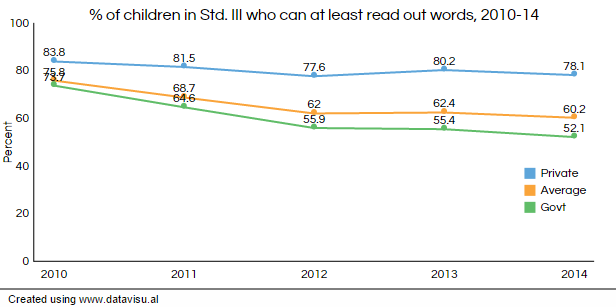If you are an affluent and well-educated Indian, your children are likely to do better at school.
There seems to be a strong relation between affluence indicators and children's learning outcomes, according to the 2014 Annual Status Report on Education (ASER).
"The credit for a child's education goes not just to the school but to the parents as well," Rukmini Banerji, director, ASER centre, told IndiaSpend.
Affluence ensures that households tend to be smaller, allowing parents to devote more attention to their children; they can also afford to pay for supplemental learning aids.
Students in the northern state of Himachal Pradesh, for example, do relatively well at math and reading; Himachal Pradesh being a state that reports high levels of affluence and parental education. The same was true for Kerala and Manipur.
The ASER report covered 577 rural districts across India and surveyed 16,497 villages, 341,070 households and 569,229 students. The ASER centre is an autonomous body under the Pratham network, which works across rural and urban areas to help children acquire basic skills in reading and arithmetic.
Overall, the situation with basic reading continues to be grim in India, with falling levels of learning. Only a fourth of all children in Standard (Std.) III can read a Std. II text fluently, a drop of more than 5% over four years.
With math, a quarter of children in Std. III could not recognise numbers between 10 and 99, a drop of 13% over four years.
So, is there any difference in outcomes between public and private schools? The enrolment in private schools is going up, as we explained in our earlier report on ASER 2013. Private school enrolment stood at around 18.7% in 2006, and has steadily increased to 30.8% in 2014.
The learning outcomes of private schools tend to be much better than public schools.
